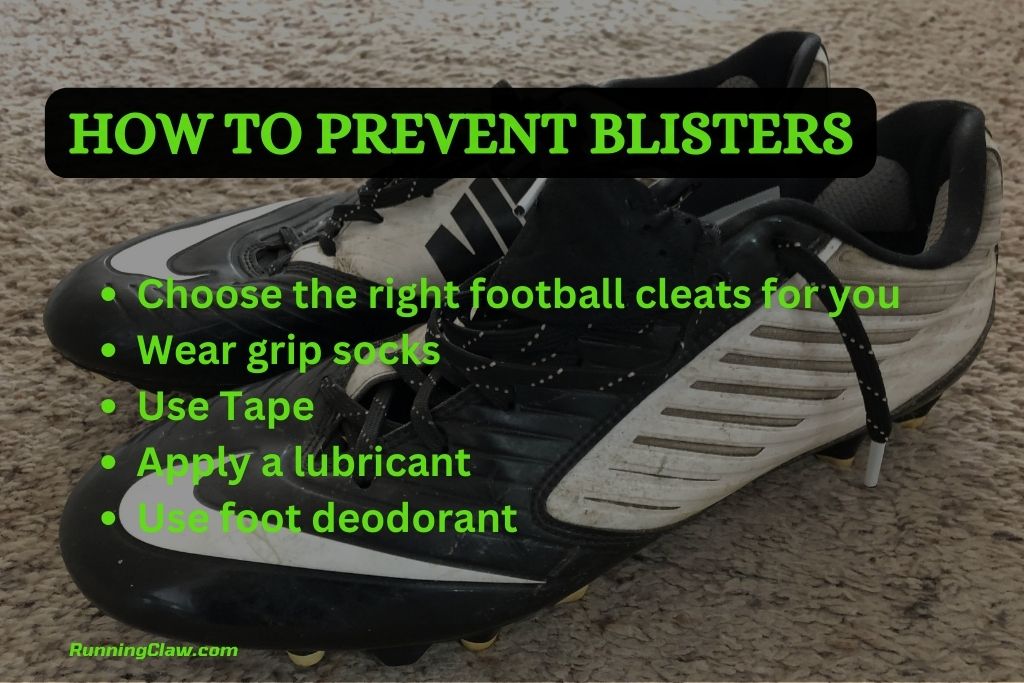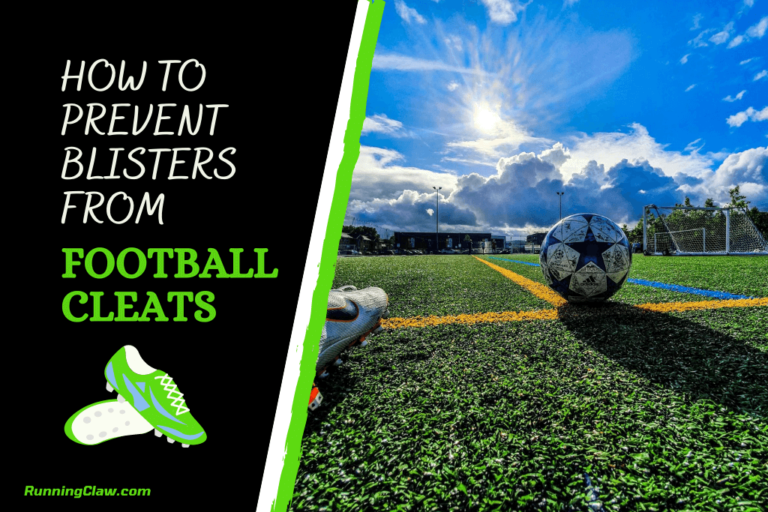Blisters are small pockets of fluid that form in the skin’s upper layers after it has been damaged. Although they can appear anywhere on the body, blisters most frequently appear on the hands and feet. Under the damaged skin, fluid accumulates, cushioning the tissue.
Almost every athlete faces this problem in their career.
Now the question is,
Why are blisters caused?
Causes:
- Allergic Reactions
- Bacterial Infections
- Friction
- Excessive Heat
- Fungal Infections
Symptoms:
Under the surface of the skin, blisters are tiny pockets of clear liquid. Blood is inside blood blisters, which can appear reddish or black. An infected blister may be hot and contain green or yellow pus. The surrounding skin may appear red on darker skin tones, but this cannot be easy to see.
Effects:
Blisters can be very painful. They are mostly caused on the heels of athletes who wear shoes for long times, like soccer players. When they play soccer wearing their cleats, the friction causes blisters on their heels.
The player may face pain, and gradually it will affect the performance.
Read | What is Soccer Cleats?
How to play with Blisters?

It is better to let the blister heal first, and it takes proper care and rest. However, if you still want to play with the blisters on your feet, follow the steps because care is better than cure.
Reduce the friction:
As discussed above, blisters are caused by friction and excessive heat caused by friction; the first step you should take is to Reduce the friction.
To reduce the friction, follow these steps:
Zinc Oxide Tape:
If the blister is still healing, apply a plaster or gauze dressing before applying zinc oxide tape. You can usually tape over it if it has healed and is clean and dry. You can also use tape to protect healthy skin from blisters in vulnerable areas.
Compeed Blister Plasters:
The Compeed Blister Plasters are a good choice because they are designed to protect the affected area by expanding in response to friction.
Use Lubricant:
To reduce friction, lubricants like Vaseline are a good choice. Cover the inside of the foot’s arch to the base of the big toe. It’s also good to do the tips of the toes and the space between them.
Some people also put Vaseline on the outside of the sock and a little on the inside of the shoe where the friction is.
Bodyglide is also a great option for reducing friction when used as a lubricant.
How to Prevent Blisters?

As it is said, “Prevention is better than cure.” Here are some useful techniques you can apply to prevent blisters.
Choose the right football cleats for you:
The best way to avoid blisters is to buy a pair of cleats that fit like a glove. When football cleats are too big, the foot can move around inside them, which makes friction.
On the other hand, if you wear shoes that are too small, your feet will be squished together and stress your skin.
When you don’t have much money, you can buy whatever cleats are on sale or use a friend’s used football boots. As long as the boots fit well, there’s nothing wrong with that.
Refrain from being tempted to think that a shoe that’s too tight will stretch or that an extra pair of socks will help a shoe that’s too loose fit better.
Another common mistake is wearing brand-new football boots to a game or practice immediately. If you don’t break in your cleats first, you will almost certainly get a blister.
You can break in your boots by wearing them around the house for a few days. Other tips you can find online, like putting your boots under hot water.
Wear grip socks:
Football grip socks are a good way to keep your feet from getting blisters. The rubber dots on the bottom of grip socks keep the foot from moving around inside the boot. Grip socks come in different styles.
Some are like long football socks where you can put your shin guards. Some are short socks that you wear on top of your regular football socks. Also, these socks were made to soak up as much sweat as possible.
Remember how important it is to wear good socks made for football. Most socks that aren’t made for sports soak up moisture, which makes your foot slide inside the shoe. If your socks are too thin, you’ll get blisters.
On the other hand, if you wear thick socks, they will bunch up inside your boots and cause friction.
Use tape:
Applying tape or padding to the friction area can be helpful if your skin is still healing from a blister or if you want to prevent them from developing in common places like heels and ankles.
By doing this, the friction between the padding and the shoe instead of your skin occurs. Nevertheless, you might need to adjust the padding during the game because perspiration and movement could cause it to move.
Occasionally, you may experience discomfort while playing a game and notice a blister forming. Get a replacement as soon as possible, then examine your feet.
Dry the sweat off your feet if you see a red spot because it will probably turn into a blister. Then, apply whatever protection you like.
Apply a lubricant:
Vaseline and skin lube can also be helpful, but they can be a little messy. To lessen friction, apply the lubricant inside the boot and on the parts of your foot that are prone to blisters.
You should reapply it throughout the game, depending on the kind of product you use, the humidity, and other variables.
Therefore, this advice performs best with one of the earlier suggestions.
Use foot deodorant:
Blisters will develop if your skin is weak from an athlete’s foot or other skin conditions. Therefore, the best way to avoid them is to maintain the health of your feet. You should include foot deodorants in your foot hygiene routine.
They are used for more than just minimizing foot odor. They assist in keeping your feet as dry and clean as possible throughout the game, thereby lowering friction.
Deodorants have limited effectiveness, much like lubricants, but they can lessen the likelihood of blistering. Utilize this advice along with quality socks and barrier tapes.
Conclusion:
Other precautions players take include wearing two socks, donning soft insoles, tying their laces, cutting a hole in the heel of their boots (yes, this is a thing! ), and many others.
In the end, maintaining good foot hygiene and reducing friction will help you avoid blisters. Blisters won’t be an issue if you keep your feet dry and clean and wear the proper footwear.
You may also like:
- Can You Wear Metal Cleats on Turf?
- How Much do Soccer Cleats Cost?
- What Are Firm Ground Soccer Cleats?
- How To Make Soccer Cleats Soft?
- Soccer Cleats Vs Baseball Cleats
- How to Clean White Cleats?
- Do Nike Cleats Run Small?
- Do New Balance Soccer Cleats Shrink?
- How to Get Kangaroo Leather Cleats in California?


